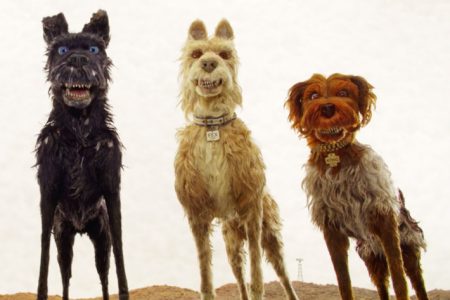Why can’t everyone just get along? You really do have to wonder. I take my dog out for walks every day, and every day she meets up with other dogs and mostly has a lovely canter around, playing and running with her new friends. Complete strangers, but mostly getting on fine.
 Now, just occasionally things may not go so well, she will snap a warning if another dog seems to pose a threat and similarly she may be told to ‘back off’ by another dog. But very rarely will events progress further than that.
Now, just occasionally things may not go so well, she will snap a warning if another dog seems to pose a threat and similarly she may be told to ‘back off’ by another dog. But very rarely will events progress further than that.
So, as I stand in a muddy field, in the freezing small hours, wrapped up to the eyeballs against the cold, the thought crosses my mind: ‘Why can’t managers in the hundreds of companies around the world I’ve worked with, get on with each other as well as my Weimaraner does with her canine companions? Why do larger organisations seem to be breeding grounds for corporate success but personal dissatisfaction?
What is it about organisational life that encourage working in silos where people don’t communicate responsively with each other but defend their territories, even when they are not under threat? Of course, we can say it is down to the personalities and vision of those in key positions, but this simplification is insufficient and doesn’t help those who would seek to have things work better.
To create a more unified team where there is free flow of information, ideas and data, means creating values and a vision that transcend departmental differences. It means understanding, and working with the sub-cultures which exist within all companies.
Sub-cultures are inevitable, because the various departments within any organisation have differing objectives, structures and processes. It’s easy for us to imagine that the people in Sales have very different thought processes and perspectives on the business than, say, the HR department. Those differing perspectives are both creating and in turn created and reinforced by their sub-cultures.
When sub-cultures function well, they tend to be deliberately cultivated, managed and encouraged. They also don’t necessarily have to be completely different types of discipline within the organisation.
An excellent commercial example is Lever Bros. It was decades ago that they developed the practice of pitching rival brands within the company against each other. A kind of controlled institutionalised conflict. It really worked for them. In our experience at dancing lion, this strategy only works well when it’s wielded by a leadership team who are skilled in the art of developing ambitious executives and facilitating a harmonious communication structure.
When it’s not in safe hands, or not managed at all, it can become a serious problem.
A kind of tribalism can emerge, which when entrenched, can do real damage to the effectiveness of a company. And as the rot takes hold, the staff of entire departments can become sucked into the intransigence, in a form of misguided loyalty to managers who may be at loggerheads for reasons that have become unclear even to them. Blame, office politics and lack of ownership abounds.
How to manage such situations, when the forming of factions arises so naturally amongst we humans? The answer lies in studying the models employed by the great behemoths of trade and industry mentioned above.
To begin with, understanding the company culture as a living entity, must exist in the minds of the leadership team. You might call this the company ecology – the overall construct within which the culture and sub-cultures function and interrelate.
It must also be acknowledged that the existence of sub-cultures is healthy and necessary to the effectiveness of the company. It can be a symptom of commitment and focus on the part of managers and the staff within those departments.
Where conflicts arise amongst the managers of sub-cultures, dancing lion approaches the problem through understanding differing sub-culture values and practices. A sales manager may require open discussion between all parties to resolve an internal issue. An HR manager may prefer private consultation. Those circles have to be squared.
Establishing just this one element in itself frequently provides an insight into the heart of any communication problem – inherently contrasting values and principles, for example: Conservative/Labour, Communication/Confidential, Dynamic/Reflective, Proactive/Reactive Entrepreneurial/Prudent, Options/Procedures.
Unless this is done, what you will hear instead is the exasperated appeal of senior managers to their department heads – ‘Why can’t you people just get on!’
The answer to that is we’re people, and people are complex. Understanding and honouring the values the sub culture serves is a necessary part of moving forward in any organisational change initiative.
dancing lion have been called upon many times to provide fast and effective business interventions, where internal situations have affected the running of a business. Call us today and discover how we can assist you in developing an organisational culture you wish to be a part of and establishing more efficient and harmonious methods of internal communications.

Dancing lion have a strong track record in assisting organisations to implement customer satisfaction initiatives.
To find out more, phone 0044 (0)1908 644791, email, visit their Website




